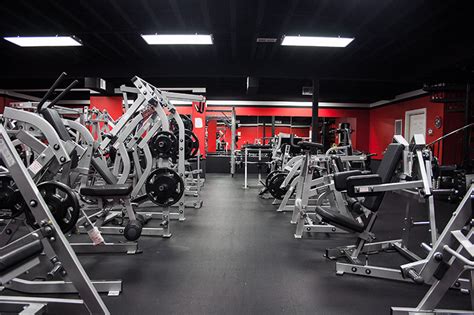Maximize training to naturally boost testosterone for peak male performance?

Unlocking Your Natural Testosterone Potential Through Smart Training
Testosterone, the primary male sex hormone, plays a crucial role not just in libido and fertility, but also in muscle growth, bone density, mood, and overall energy levels. As men age, testosterone levels naturally decline, but various lifestyle factors can either accelerate this decline or, conversely, help maintain and even boost levels naturally. Among these, strategic training stands out as one of the most powerful and accessible tools for optimizing your hormonal profile and achieving peak male performance.
Instead of relying on external supplements, understanding how specific exercise modalities influence your endocrine system allows you to harness your body’s inherent capacity to produce more testosterone. This article will delve into the types of training that have the most significant impact, offering a roadmap to naturally elevate your testosterone and enhance your physical and mental well-being.
The Power of Compound Movements
When it comes to stimulating testosterone production, not all exercises are created equal. Compound movements, which involve multiple joints and muscle groups working simultaneously, are paramount. These exercises demand a greater physiological response from your body, leading to a more pronounced hormonal surge compared to isolated movements. Think about the sheer effort required for a heavy squat versus a bicep curl; the former engages virtually every major muscle group, triggering a cascade of beneficial hormones.
Key compound lifts to incorporate include:
- Squats: Barbell back squats, front squats, goblet squats.
- Deadlifts: Conventional deadlifts, sumo deadlifts, Romanian deadlifts.
- Bench Press: Flat, incline, and decline variations.
- Overhead Press: Barbell or dumbbell shoulder press.
- Rows: Barbell rows, dumbbell rows, T-bar rows.
Prioritizing these foundational movements in your routine, performed with proper form and challenging weights, forms the bedrock of a testosterone-boosting training program.

High-Intensity Training and Progressive Overload
Beyond the choice of exercises, the intensity and structure of your workouts are critical. High-Intensity Interval Training (HIIT) has been shown to significantly elevate growth hormone and testosterone levels. HIIT involves short bursts of maximal effort followed by brief recovery periods. This type of training pushes your anaerobic system, creating a powerful metabolic stress that signals your body to produce more anabolic hormones.
Examples of HIIT can include:
- Sprinting (track or stationary bike)
- Kettlebell swings
- Burpees
- Jump squats
In conjunction with HIIT, the principle of progressive overload is essential for sustained testosterone optimization. This means consistently challenging your muscles by gradually increasing the weight, reps, sets, or decreasing rest times over time. Your body adapts to stress, so without continuously presenting new challenges, your progress will plateau, and so will the hormonal stimulus.

Striking the Right Balance: Volume and Frequency
While intensity is crucial, volume (total work performed) and frequency (how often you train) also play a significant role. Training each major muscle group 2-3 times per week with adequate volume has generally been found optimal for muscle growth and hormonal response. However, there’s a fine line between optimal stimulation and overtraining.
Overtraining can actually have the opposite effect, leading to elevated cortisol (a stress hormone) and suppressed testosterone. Symptoms of overtraining include persistent fatigue, decreased performance, irritability, and prolonged muscle soreness. Listening to your body and ensuring sufficient recovery time between sessions is just as important as the training itself.

The Crucial Role of Recovery
Your body doesn’t build muscle or produce hormones while you’re actively working out; it does so during recovery. This is why aspects like sleep and stress management, though not directly ‘training,’ are inseparable from a successful testosterone-boosting regimen. Aim for 7-9 hours of quality sleep per night, as testosterone production is highest during deep sleep cycles. Chronic stress, on the other hand, elevates cortisol, which directly competes with testosterone and can lead to its suppression. Incorporating stress-reduction techniques like meditation or mindfulness can indirectly support your hormonal health.

Integrating a Testosterone-Boosting Routine
A sample weekly split incorporating these principles might look like:
- Monday: Lower Body (Heavy Squats, Deadlifts, Leg Press, Lunges)
- Tuesday: Upper Body (Bench Press, Overhead Press, Rows, Pull-ups)
- Wednesday: Active Recovery or HIIT (Sprints, Kettlebell Circuit)
- Thursday: Full Body Compound Focus (Reduced volume from Mon/Tue but still heavy)
- Friday: Upper Body or dedicated Arm/Shoulder work (Lighter, more hypertrophy focused)
- Saturday/Sunday: Rest or light activity.
Remember that nutrition also plays a supportive role; a diet rich in healthy fats, adequate protein, and sufficient carbohydrates provides the building blocks and energy required for hormone production and muscle repair. Ensure you’re consuming enough calories to support your training demands.

Conclusion: Commit to a Holistic Approach
Naturally boosting testosterone for peak male performance is an achievable goal through intelligent and consistent training. By prioritizing heavy compound lifts, incorporating high-intensity intervals, practicing progressive overload, and allowing for adequate recovery, you can effectively signal your body to optimize its hormonal output. This approach not only enhances your physical capabilities—leading to greater strength, muscle mass, and endurance—but also contributes significantly to improved mood, cognitive function, and overall vitality. Embrace these training strategies as a cornerstone of your journey towards sustained peak performance and a healthier, more robust you.






